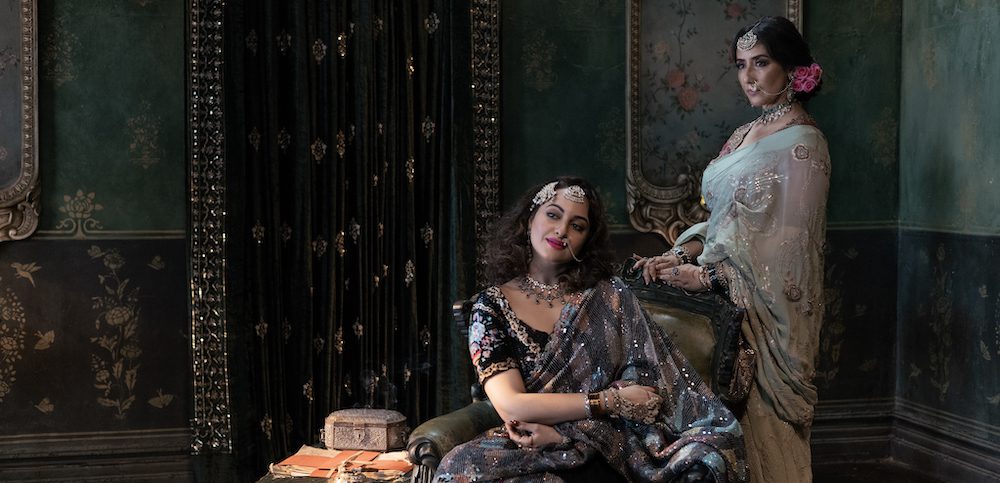In the glamorous streets of Heeramandi, a silent battle is waged between two rival tawaif (courtesans), the causes for which go back several decades. The conflict centers on Mallikajaan, the most affluent tawaif of Lahore in British-ruled India, and the upstart Fareedan, who has returned for revenge. Mallikajaan is Fareedan’s aunt, who sold her off as a young girl. They share a history of loss, bitterness, and hatred.
Mallikajaan and Fareedan run neighboring establishments, competing for the wealthy Nawab clientele while seeking to undermine each other by unearthing buried secrets and forming alliances. Brought to life by Sanjay Leela Bhansali, ‘Heeramandi: The Diamond Bazaar’ is a Netflix period drama that revolves around the power struggle between Mallikajaan and Fareedan, with most of its characters being swept up in the game of intrigue.
Mallikajaan and Fareedan are Fictional Characters Inspired by Tawaif Culture
The tawaif are a largely misunderstood and deliberately tarnished part of India’s cultural history, dramatically represented by the inventive characters of Malikajaan and Fareedan. While the exact narrative and personalities may be fictional, many of the themes the show explores held true to the known lives of the historical Tawaif. These discourses range from their wealth and influence, taboo status, illegitimate children, internal competition, and even contributions to the Indian independence movement. In addition, the extremely high production value of ‘Heeramandi: The Diamond Bazaar Malikajaan’ and the stellar performances by the actors, especially Manisha Koirala as Mallikajaan, contribute to a lifelike recreation of the period.

When the Mughal empire established itself across India, it led to the eventual evolution of tawaif culture to its high point, with the deredar tawaif boasting royal lineages and the patronages of emperors and nawabs. The courtesans trained from a young age in Indian classical dance like Kathak, music, poetry, and literature. They were regarded as entertainers and models of refinement. Noble households would send their children to them to be taught etiquette and soft skills.
However, the grandeur of tawaif culture began to wane with the arrival of the British in India. The colonial administration brought with it a wave of moral and cultural imperialism that sought to suppress indigenous traditions deemed incompatible with Victorian values. Once revered as pillars of refinement and sophistication, Tawaif were now vilified as symbols of moral decadence. Moreover, the tawaifs’ participation in India’s struggle for independence further cemented their status as a threat to British influence and culture.
As depicted in the show, the courtesans used their established wealth and influence to support the Indian revolutionary movements. The most well-documented case of the same was in Kanpur during the Indian Rebellion of 1857. The tawaif provided funds and resources to the rebels, gave them sanctuary within their kothas, and, in the case of Azeezunbai, even ventured to the frontlines. Their involvement did not go unnoticed, and the British administration’s crackdown on their wealth and social status was swift.

In the time period of the series, the tawaif were a shell of their past glory, losing their royal patronage in Delhi and moving to other parts of India to entertain nawabs and other wealthy individuals. They were seen as taboo and immoral, with their roles as cultural custodians being degraded to those of prostitutes.
Mallikajaan, portrayed with captivating intensity by Manisha Koirala, epitomizes the archetypal tawaif – fiercely independent, unapologetically ambitious, and bound by a code of honor that demands loyalty above all else. Her establishment, a bastion of luxury and extravagance, serves as a testament to her prowess and influence in Heeramandi’s social hierarchy. Yet, beneath her facade of strength lies a vulnerability born of past betrayals and unresolved grievances. Manisha Koirala actually employed method acting to convincingly don the intense character of Mallikajaan, often isolating herself before the shoot and carrying the persona with her between takes.
Opposing Mallikajaan is Fareedan, a formidable force driven by a thirst for vengeance and a desire to reclaim her lost dignity. Her return to Heeramandi ignites a spark of rebellion, challenging Mallikajaan’s reign and setting the stage for a dramatic showdown. However, by the end, both women begin to see eye to eye in the face of a common enemy, realizing they are very much alike. Similar to their historical counterparts’ efforts against the British, Mallikajaan and Fareedan come together to lead the entirety of Heeramandi in a march for independent India.
Read More: Best Indian Shows on Netflix


You must be logged in to post a comment.